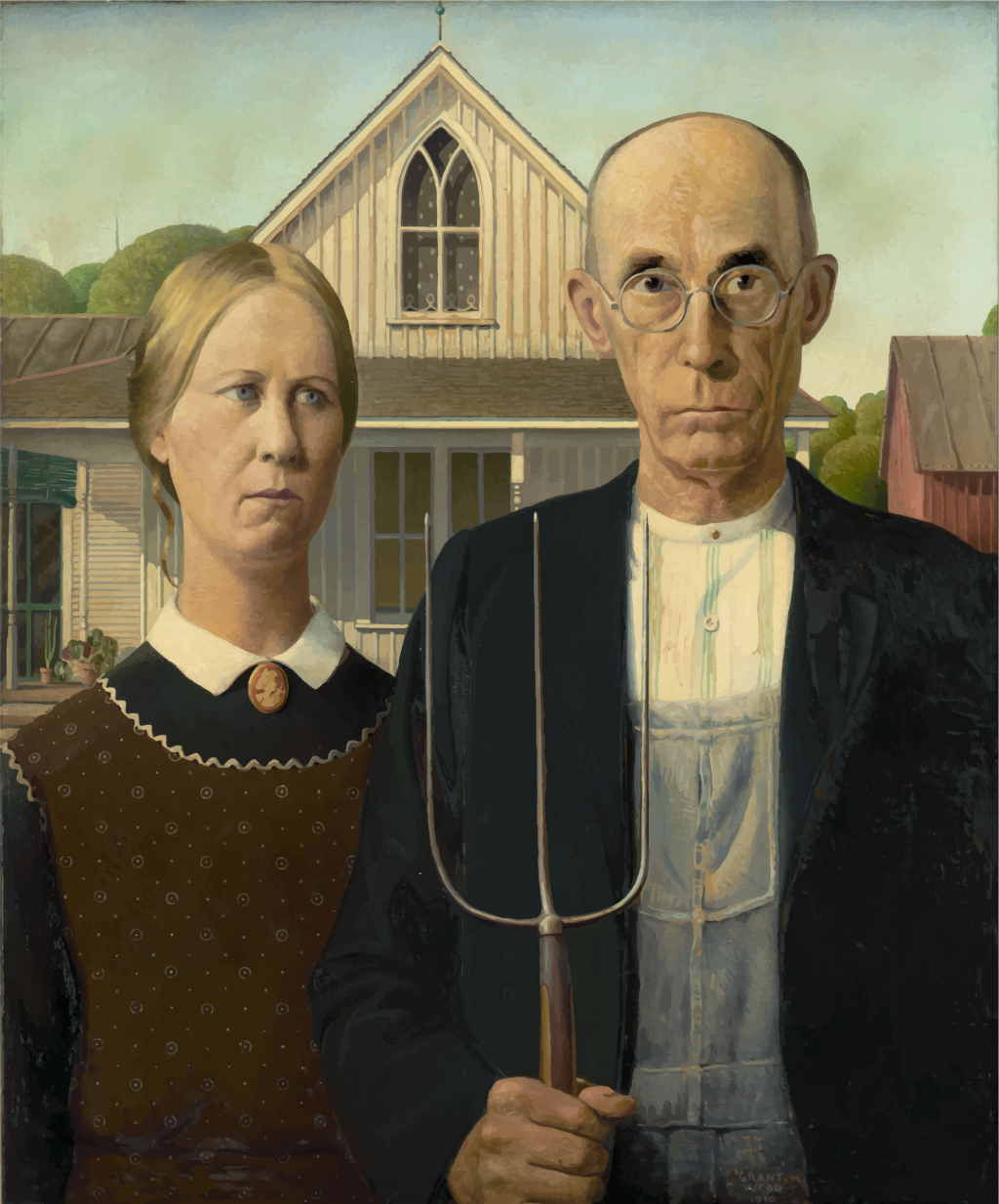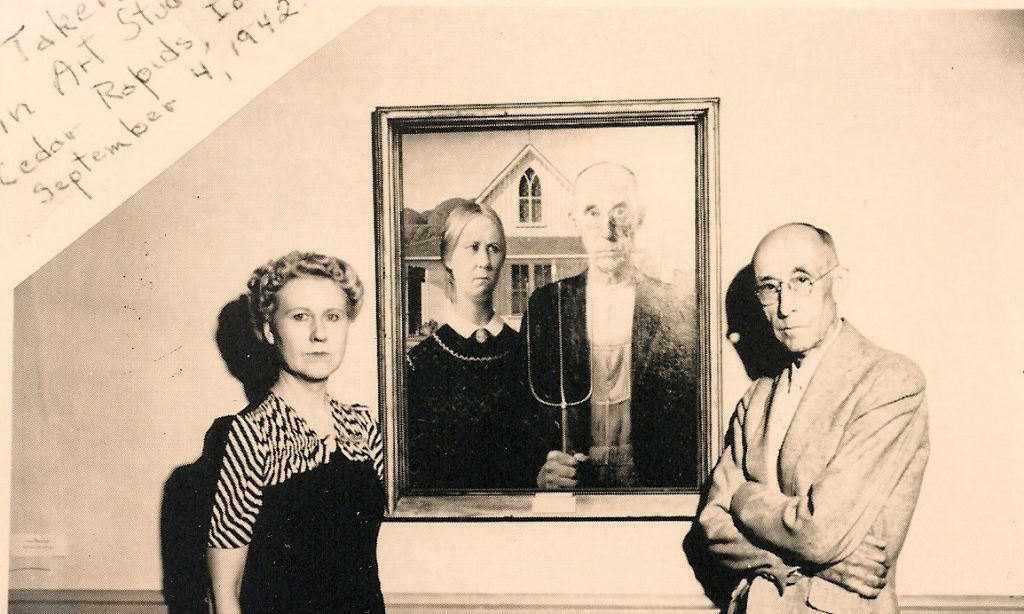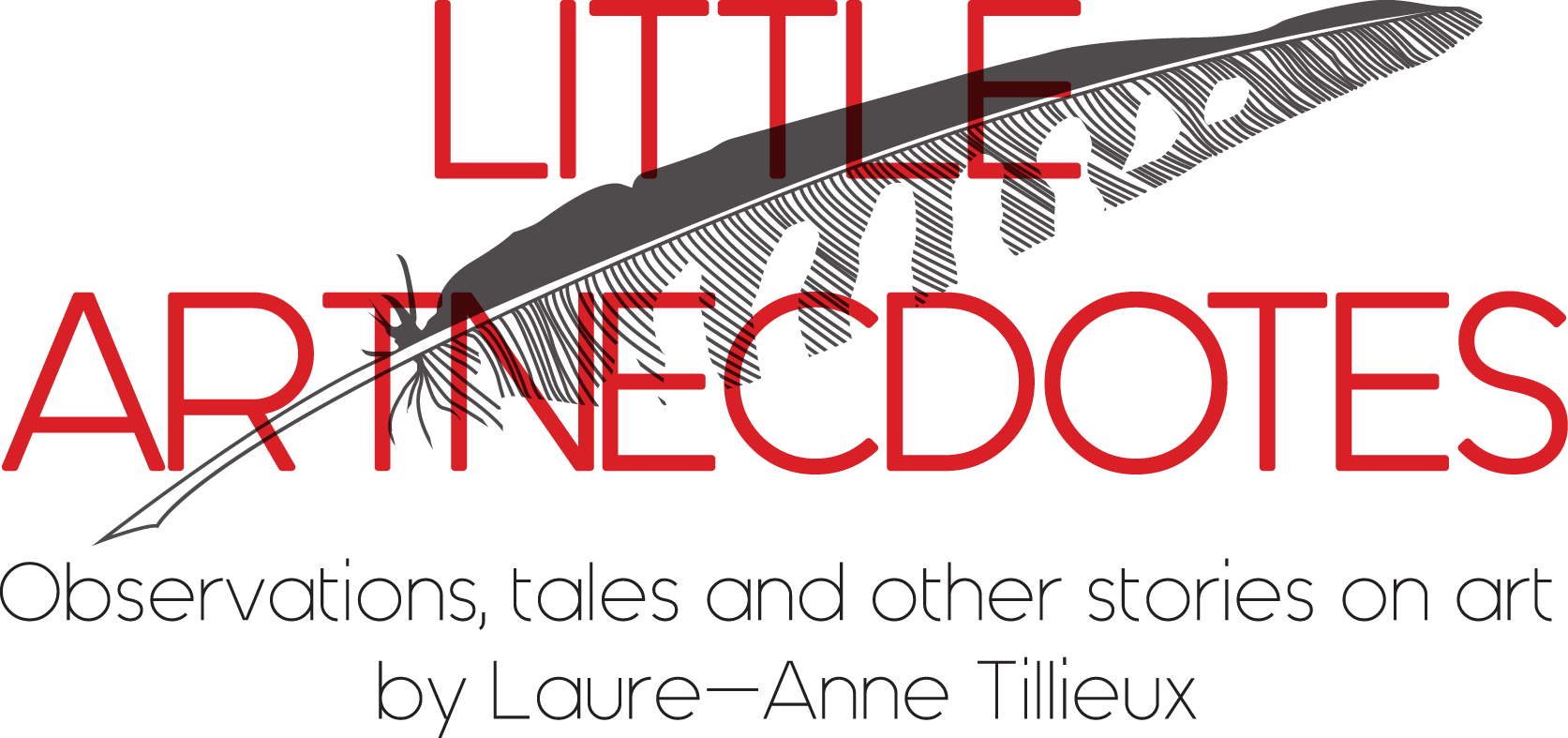
American Gothic
Grant Wood’s (1892-1942) American Gothic of 1930 is considered as one of the most famous twentieth-century American paintings. Instantly recognisable – a couple standing sentry before a white wooden house in apron and overalls, and with a pitchfork in hand- the painting became an iconic work for the post Wall Street Crash era and the transformative period thereafter. America was a nation in flux and artists sought to capture the changes in urbanisation, industrialisation and immigration that pulsed across the country during those years.
Wood visited the small town of Eldon in his native Iowa. There he spotted a wooden farmhouse with a distinctive upper window, made in a style called Carpenter Gothic. The artist imagined American Gothic people with faces stretched out long in order to match the American Gothic house. As models for the painting he asked his sister and his dentist to pose as farmer and his daughter, and dressed them as if they were photos from his old family album. Using his knowledge and experience from his European travels made between 1920 and 1926, Wood borrowed the highly detailed, polished style and rigid frontality of the two figures from the Flemish Primitives (think Jan van Eyck or Hans Memling).
After his return in Iowa, he became increasingly appreciative of Midwestern traditions and culture. Understood as a satirical comment on the Midwestern character, American Gothic was the celebration of this freshly gained appreciation. Yet Wood’s intentions were to create a positive statement about rural American values, an image of reassurance at a time of great dislocation and disillusionment. Like other artists of his time as Thomas Hart Benton and John Steuart Curry, Wood embraced the redemptive values of hard work, self-reliance, and community as sources of American strength and solidarity. He wanted to reflect larger nationalist interests in determining primary aspects of the American character.
Over the years the work became one of the most parodied paintings in history, as seen in magazines, advertisements, editorials, or even cartoons. It was suitable for any form of communication, and for any objective. Is American Gothic still valid today? Is a renewed popularity on the way? And could there be a revival of ‘American Gothic’ in today’s America?

